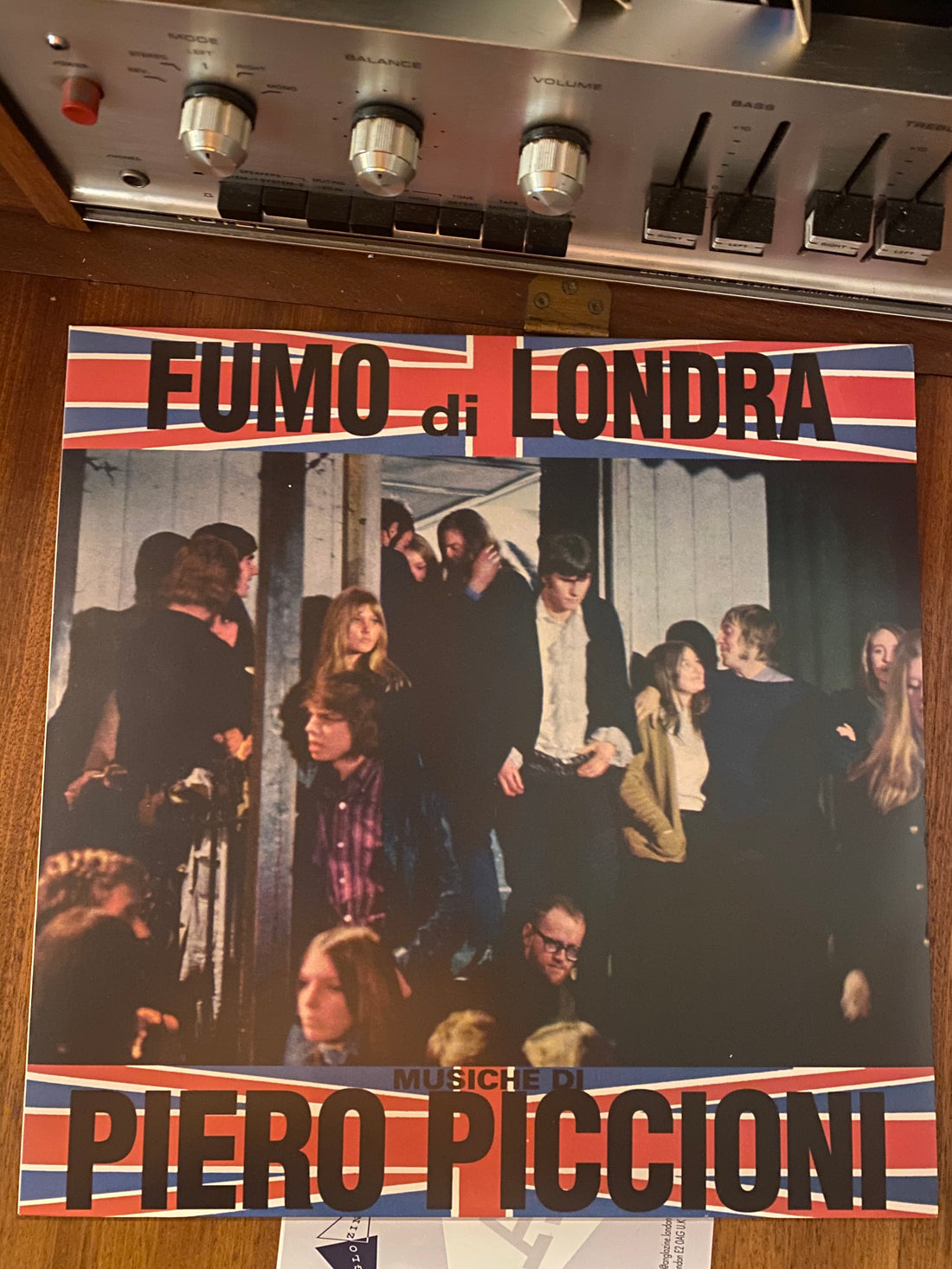
The Murals and shakers of Fumo Di Londra on Eel Pie Island

Italian film Fumo di Londra (Smoke over London) a.k.a Thank you very much -was directed and starred Italian cinema hero Alberto Sordi in 1966. The newspapers worldwide were full of swinging London and the football team had just won the world cup, London it seemed was the epicentre of cool. As with many of Anglozines inspirations we look out of this Island to get a time frame capture of the spirit.
The premise of this mad cap comedy caper, an almost cross cultural training film clip- is based on Sordi's character Dante Fontana. An Anglophile antique dealer from Perugia taking his first trip to London and delves straight into the Brit cliches as soon as his Alitalia flight hits the tarmac by jumping the taxi queue at Heathrow.

On Dantes first full day in the capital city he gets about everywhere it seems on London black cabs to: Jermyn Street, Haymarket, Savile Row. Ticking off the English gent shopping list of bowler hat, pinstripes and umbrella's at: Locke & Co, Brigg, John Lobb and even a red carnation from Fortnum & Masons. Theres a Julie Rogers song on the brilliant Fumo di Londra sound track by Piero Piccioni that gives shout outs to these royal warrant outfitters.

The reason we watched the film again was to take a look at the scenes captured inside Eel Pie Island Jazz Club our theme for autumn 2020. The famous murals on the walls and main stage back drop were painted by local boy Paul Harris and are clearly visible.
We took inspiration from its crossover trad jazz, beatnik and tale end modernist clubbers and paid homage to the murals on our EEL PIE and HARLECH back print tshirts

https://www.anglozine.london/products/a20-eel-pie

https://www.anglozine.london/products/a20-harlech-print-t-shirt-khaki
If you don't mind watching the film in Italian (its not the most obscure script you'll come across) the film is available to watch in its entirety on Youtube.
For the Eel Pie Island scene skip to around the 1 Hour 19 minutes mark, where Dante takes a stroll over Richmond bridge. Its also a turning point in the film which until that point had been dedicated to the snootier side of London and home counties. Dante winds his way over the bridge through the Trad jazzers, beatniks and mods to the club, pays his 4 shillings and enters the club





When Arthur Chisnall set up the Eel Pie Jazz Club it was initially a youth club and so its interesting to see that there was a Youth Club sign at the entrance along with a Beatles poster alas they never played at the club.

Once inside the club the cross over of subcultures is evident, many of the cats at the club were regulars and a few model types for the benefit of the film no doubt but you cant fake these haircuts.


The film quality set lights show the main mural in its full technicolour splendor although apparently some of the colours were quite dreary as they were painted with paint intended for boat hulls from the surrounding boat yards. Most gig photography from the club was taken on standard cameras and obviously in a gig environment its dark and the focus is the musician and so this is the best depiction we know of the inside of the club and its artwork.




As with most of these 1960's comedy's the story starts to dwindle and your attention is drawn to the crowd and extras. One face caught our eye a certain original modernist Mickey Tenner dancing on the left of the lead actress (Fiona Lewis). Tenner made a huge impact on the modernist scene in the UK and can be credited with dance moves, dress and quite possibly the reason mods still wear cycling jerseys today. Mickey Tenner created his own styles that were captured on the Ready Steady Go music tv show every Friday. The audience of RSG was sometimes just as if not more inspiring than the main act a little like the Fumo di Londra.

There is another modernist legend caught in a millisecond of film at 1 hour 34 minutes when the following day Dante and his new found 'mod' mates head down to Portobello market.
Streatham boy Denzil is in the crowd. We featured Denzil in one of the earlier Sunday Times blog posts, the first newspaper cover story on the modernist scene called "Changing Faces", he's on the cover of this sought after 2nd August 1964 issue. Denzil went onto become an assistant to photographer Robert Freeman and he was one of the most respected black modernists on the London scene at the time. The Sunday Times issue photographed bizarrely by Robert Freeman.


Thats the only time we can see Denzil in action, theres a daft mods and rockers scrap at the end of the film which Mickey Tenner turns up for. It flips from Dante Fontana to Dantes inferno when he gets arrested in the Chelsea boot melee and is sent back to Italy, THE END ........its no Scorsese film but while its still up on Youtube give it a glance.

